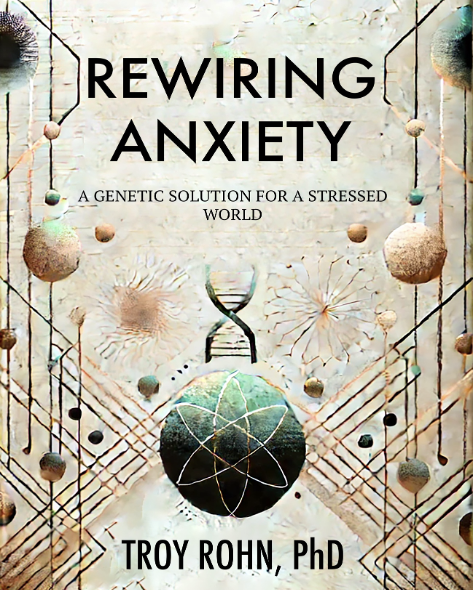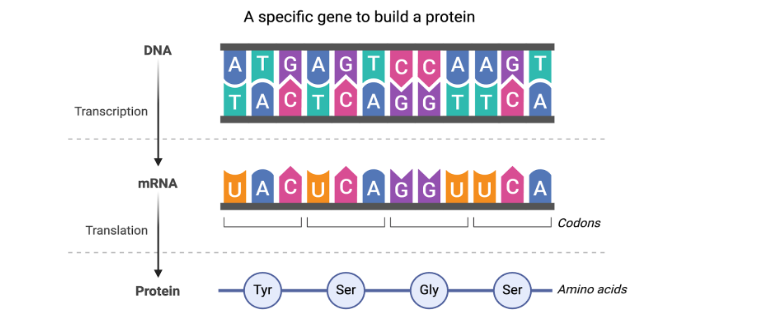Navigating Anxiety with Gene Therapy
•
Navigating Anxiety with Gene Therapy •
Episode #6 - Rewriting the Blueprint: How CRISPR Offers New Hope for Anxiety
In this episode of Science & Self: Navigating Anxiety with Gene Therapy, we delve into the transformative potential of CRISPR technology for anxiety treatment. By precisely targeting and editing genes associated with stress and fear responses, CRISPR offers a groundbreaking approach to addressing anxiety at its biological roots. This episode unpacks the science behind gene editing and how it could pave the way for long-lasting relief and a new era in mental health care.
The CRISPR system has two key components that work together
for gene editing. The guide RNA acts like a set of GPS
coordinates, directing the Cas9 protein to the precise location in
the DNA that needs to be altered. Once at the target, the Cas9
protein functions as molecular scissors, cutting both DNA strands
of the helix to enable the desired changes.
Illustration depicts two methods by which cells can mend double-stranded breaks
(DSBs), following cleavage by CRISPR/Cas9. On the left is Non-homologous end
joining (NHEJ), a faster but less accurate technique than HDR. It links the damaged
DNA ends without requiring a template, often resulting in unintentional insertions or
deletions. NHEJ is the repair system that neurons rely on. The right side depicts
Homology Directed Repair (HDR), which utilizes a complementary piece of DNA (donor
DNA) to mend the break precisely. However, the cellular machinery for this is only
present in dividing cells.
Episode #5 - The Serotonin Solution: Targeting the 5-HT2A Receptor to Rewire Anxiety
The “hyperactive distressive connectome” hypothesis, as illustrated, involves key brain hubs, including the insula,
hippocampus, amygdala, and thalamus. When hyperactivity is present in this network, it can perpetuate a cycle off
emotional distress, leading to chronic anxiety.
The serotonin synapse. The synapse is a narrow gap between the presynaptic and postsynaptic terminals of adjacent neurons
at a synapse. It serves as a physical barrier for transmitting electrical signals between neurons.
Neurotransmitters are chemicals that bridge that gap and allow the electrical signal to
be converted into a chemical signal. In this case, serotonin is released by the presynaptic neuron into the synapse, diffusing across the gap to bind with, in this example, 5
- HT2A receptors on the postsynaptic neuron, thereby facilitating the transfer of information between neurons. The result is an increased excitability (firing rate) of the postsynaptic neuron.
My tattoo depicts the molecular structure of serotonin, a key neurotransmitter involved in mood regulation, alongside the 5-HT2A receptor gene (HTR2A), which plays a critical role i serotonin signaling. The tattoo symbolizes my own personal and professional investment in the serotonin pathway.
Episode #4 - From Code to Cure: How DNA Writes the Protein Blueprint
This schematic illustrates the process of using DNA to create proteins. First, the information in DNA is copied into mRNA during a process called transcription. The next step is translation, whereby the mRNA is read in groups of three nucleotides known as codons to form a protein. Each codon represents an amino acid.
Types of Mutations to DNA
This figure illustrates how different DNA mutations can affect the mRNA sequence and the resulting protein. The “Normal sequence” in the top-left panel shows an mRNA sequence with no mutations, producing a functional protein. In the top-right panel, a “Base-pair deletion” removes a single nucleotide, causing a frameshift mutation that alters the reading frame and changes the resulting amino acids. The bottom-left panel shows a “Base-pair insertion,” where an extra nucleotide causes an immediate stop codon, leading to a shortened, nonfunctional protein. The bottom-right panel shows a “Three-nucleotide insertion/deletion,” which removes or adds a whole codon, leading to the loss or addition of an amino acid without shifting the reading frame. However, it still affects the protein structure.
Episode #3 - The Players in this Scientific Drama
This chapter dives into the molecular characters involved in this narrative. The section gives an overview of the fundamental building blocks of life, such as DNA and proteins. It also explains how these essential components operate inside cells to help readers comprehend the principles of gene therapy application.
Episode #2 - What Me Worry?
In this podcast, from the author’s perspective, I discuss my challenges with anxiety disorder and how it affected my family relationships and daily life activities. I also discuss how childhood abuse and neglect impact brain development during the ages of 0-5, which may set a person up for a later anxiety diagnosis.
Episode #1-Pilot
In this episode of Science & Self: Navigating Anxiety with Gene Therapy, Dr. Troy Rohn dives into a personal experience with social anxiety and the surprising challenges that simple events—like a concert or a social gathering—can bring. With a mix of dry humor and candid reflection, Dr. Rohn explores how these experiences have not only shaped his personal life but also fueled his research into gene therapy as a potential treatment for anxiety. Tune in to hear how a neuroscientist tackles the everyday battle with anxiety, why crowds trigger such intense reactions, and what this means for the future









